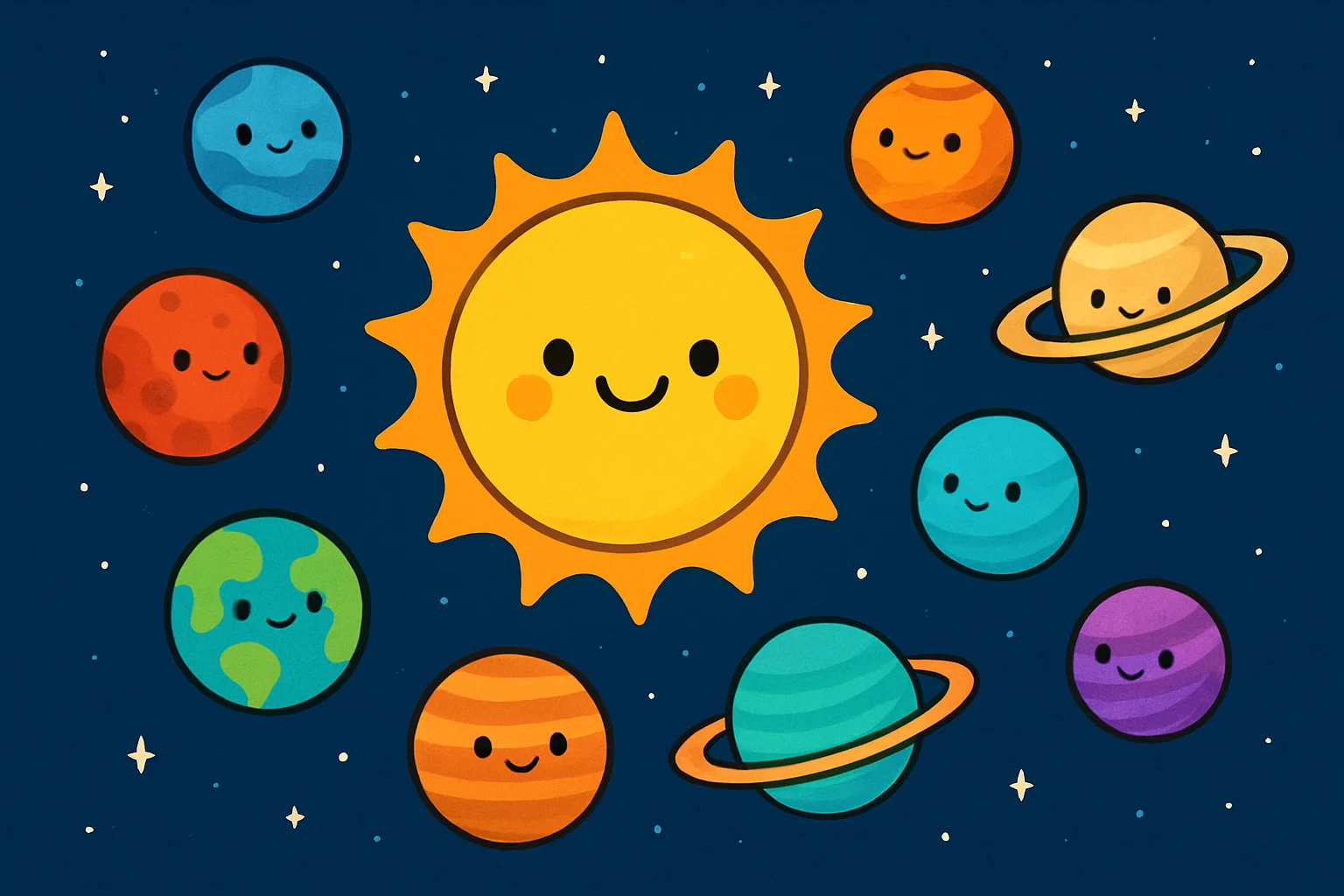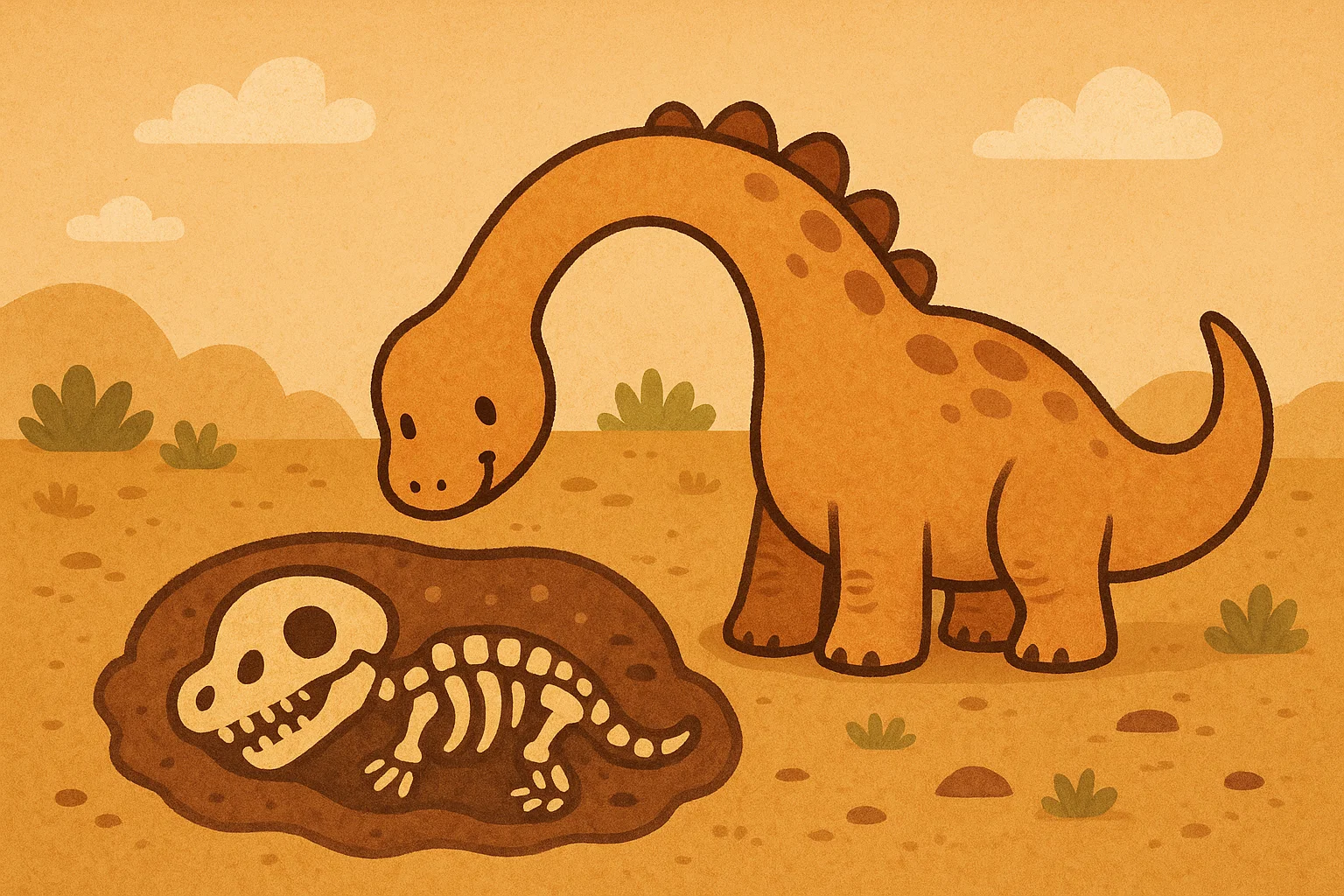Fun Facts for Kids

Learning doesn’t have to be boring. When you discover surprising details about the world around you, education becomes an adventure. This collection brings together hundreds of fascinating tidbits that will make you say “wow!” Whether you’re preparing for a trivia night, looking for conversation starters, or simply curious about everything from dolphins to dinosaurs, you’ll find plenty to explore here.
Animal Facts and Wildlife Trivia

The animal kingdom is full of surprises. From the depths of the ocean to the highest mountain peaks, creatures have evolved remarkable abilities that seem almost magical.
Amazing Dolphin and Ocean Facts
- Dolphins sleep with one eye open. These intelligent marine mammals rest one half of their brain at a time, allowing them to stay alert for predators and continue breathing at the surface. This adaptation, called unihemispheric sleep, helps them survive in the open ocean.
- Dolphins have names for each other. Each dolphin develops a unique whistle signature, and other dolphins use these specific sounds to call out to their friends. When scientists played recordings of these signature whistles, dolphins responded only to their own “name.”
- The Pacific Ocean contains some of the deepest trenches on Earth, reaching depths where sunlight never penetrates. In these dark waters, bioluminescent creatures create their own light. The Mariana Trench, for example, plunges nearly seven miles below the surface—deeper than Mount Everest is tall.
- Octopuses have three hearts and blue blood. Two hearts pump blood to the gills, while the third circulates blood to the rest of the body. Their blood contains copper-based hemocyanin instead of iron-based hemoglobin, which makes it appear blue.
Cool Facts About Insects and Bugs
- Butterflies taste with their feet. When a butterfly lands on a leaf or flower, sensors on its feet immediately detect whether the plant is suitable for laying eggs. This remarkable adaptation helps them identify the right host plants for their caterpillars.
- Ants can lift objects 50 times their own body weight. If humans had proportional strength, we could lift a car over our heads. This incredible power comes from their small size—tiny muscles have a greater strength-to-weight ratio than large ones.
- Dragonflies have been around for over 300 million years, predating dinosaurs by millions of years. Ancient dragonflies had wingspans of up to two feet, making them some of the largest insects to ever exist.
- Fireflies synchronize their flashing patterns during mating season. In some species found in Southeast Asia, thousands of male fireflies gather in trees and flash in perfect unison, creating a natural light show that can be seen from great distances.
Weird and Wild Animal Trivia for Kids
- Polar bears have black skin underneath their white fur. Their transparent hairs reflect light, making them appear white, but this coloration helps them blend into snowy environments while hunting seals.
- Sloths only defecate once a week. They climb down from their trees to do their business on the ground, losing up to 30% of their body weight in the process. Scientists aren’t entirely sure why they risk predator exposure for this ritual.
- Emperor penguins can dive deeper than 500 meters and hold their breath for over 20 minutes while hunting fish and squid. They huddle together in groups during Antarctic winters, rotating positions so every penguin gets a turn in the warm center.
- Elephants can “hear” with their feet. They detect seismic vibrations traveling through the ground, allowing them to communicate with other elephants up to six miles away. This ability helps herds coordinate movements and warn each other of danger.
Fascinating Birds and Mammals Facts
- Hummingbirds are the only birds that can fly backwards. Their wings can rotate in a full circle, beating up to 80 times per second. To fuel this incredible metabolism, they must eat approximately every 10 minutes throughout the day.
- Giraffes have the same number of neck vertebrae as humans—just seven. However, each vertebra can be over 10 inches long, giving them their characteristic towering height and allowing them to reach leaves other herbivores cannot access.
- Cats spend approximately 70% of their lives sleeping, which amounts to roughly 13-16 hours per day. This behavior is rooted in their wild ancestry, where conserving energy between hunts was essential for survival.
- Bats make up nearly 20% of all mammal species on Earth. These flying mammals play crucial roles in ecosystems by pollinating plants, dispersing seeds, and controlling insect populations. A single bat can eat thousands of mosquitoes in one night.
Science Facts for Young Minds

Science reveals the hidden mechanisms that make our world work. From the tiniest atoms to the largest galaxies, understanding these principles helps us appreciate the complexity and beauty of existence.
Random Fact from Chemistry and Physics
- Water is the only substance on Earth that naturally exists in all three states—solid, liquid, and gas—within normal temperature ranges. This unique property is essential for life as we know it.
- Diamond and graphite (pencil lead) are both made of pure carbon. The only difference is how the carbon atoms are arranged. In diamonds, they form a rigid 3D structure, while in graphite, they form slippery layers that slide over each other.
- Lightning is five times hotter than the surface of the sun, reaching temperatures of approximately 30,000 Kelvin (53,540°F). This extreme heat causes the rapid expansion of air that we hear as thunder.
- Helium makes your voice sound high-pitched because it’s less dense than air. Sound waves travel faster through helium, changing the resonant frequencies of your vocal tract without actually affecting your vocal cords.
Interesting Facts About Engineering
- The Great Wall of China took over 2,000 years to complete, with construction spanning multiple dynasties. Contrary to popular myth, it cannot be seen from space with the naked eye, though it remains one of humanity’s most impressive architectural achievements.
- 3D printers can now create functional human organs using living cells. This technology, called bioprinting, may eventually eliminate organ donor waiting lists by allowing doctors to print customized replacement organs from a patient’s own cells.
- Engineers designed the Sydney Opera House using computer technology that hadn’t been fully developed yet. The architect, Jørn Utzon, based the iconic shell structures on sections of a sphere, solving complex engineering challenges through geometric innovation.
- Bullet trains in Japan are designed with special nose cones inspired by kingfisher beaks. This biomimicry reduces air resistance and prevents sonic booms when trains exit tunnels at high speeds.
Simple Biology Facts
- Your body replaces all its cells approximately every seven to ten years, though different cell types regenerate at different rates. Red blood cells last about 120 days, while some neurons remain with you for your entire life.
- Plants can “talk” to each other through underground fungal networks. These mycorrhizal connections allow trees to share nutrients and even warn neighbors about insect attacks by transmitting chemical signals.
- The human genome contains approximately 3 billion base pairs of DNA. If you could stretch out all the DNA in your body end-to-end, it would reach from Earth to the sun and back over 300 times.
- Bacteria make up roughly half the cells in your body. These microorganisms, collectively called the microbiome, help digest food, produce vitamins, and protect against harmful pathogens.
Human Body Facts
Your body is an incredible biological machine that performs millions of processes every second without conscious thought. Understanding how it works can help you appreciate the complexity of being alive.
Weird Facts About Your Brain and Heart
- Your brain uses 20% of your body’s total energy despite accounting for only 2% of your body weight. It consumes glucose and oxygen at such high rates that it requires constant blood flow to function properly.
- The human heart beats approximately 100,000 times per day, pumping about 2,000 gallons of blood through 60,000 miles of blood vessels. Over an average lifetime, your heart will beat more than 2.5 billion times.
- You make entirely new skeletons every ten years. Specialized cells called osteoclasts break down old bone tissue while osteoblasts build new bone, keeping your skeleton strong and healthy throughout your life.
- Your brain creates new neural pathways throughout your entire life. This neuroplasticity allows you to learn new skills, form memories, and adapt to changing circumstances regardless of age.
Interesting Facts on Muscles and Bones
- The strongest muscle in your body, relative to its size, is the masseter muscle in your jaw. It can exert a force of up to 200 pounds on your molars, giving you the power to chew tough foods.
- Your bones are stronger than steel, pound for pound. A cubic inch of bone can theoretically support a weight of 19,000 pounds—about the weight of five pickup trucks.
- You have over 600 muscles in your body, accounting for approximately 40% of your total weight. These muscles work in coordinated groups to produce movement, maintain posture, and generate heat.
- The smallest bone in your body is the stapes, located in your middle ear. It’s only 2-3 millimeters long but plays a crucial role in transmitting sound vibrations from your eardrum to your inner ear.
Health and Wellness Trivia for Kids
- Your immune system remembers every germ it has ever defeated. Memory cells remain in your body for years or even decades, allowing you to mount faster responses if you encounter the same pathogen again.
- Drinking water can improve your mood, concentration, and energy levels. Even mild dehydration—losing just 1-2% of your body’s water—can impair cognitive function and physical performance.
- Sleep is when your brain clears out waste products accumulated during the day. The glymphatic system, which is most active during sleep, flushes out toxins that may contribute to neurodegenerative diseases.
- Laughter triggers the release of endorphins, your body’s natural feel-good chemicals.
Space Facts and Planet Facts

Space is vast beyond comprehension, containing billions of galaxies, each with billions of stars. Learning about the cosmos helps us understand our place in the universe.
Solar System Facts and Figures
- Jupiter is so large that all the other planets in our solar system could fit inside it. This gas giant has a mass 318 times greater than Earth and possesses at least 79 known moons.
- Saturn’s rings are made of billions of chunks of ice and rock ranging in size from tiny grains to house-sized boulders. Despite spanning up to 175,000 miles across, the rings are typically only 30 feet thick.
- A day on Venus lasts longer than a year on Venus. The planet takes 243 Earth days to rotate once on its axis but only 225 Earth days to orbit the sun, creating this unusual temporal relationship.
| Planet | Distance from Sun (million km) | Length of Day | Length of Year |
| Mercury | 58 | 59 Earth days | 88 Earth days |
| Venus | 108 | 243 Earth days | 225 Earth days |
| Earth | 150 | 24 hours | 365 days |
| Mars | 228 | 24.6 hours | 687 Earth days |
| Jupiter | 779 | 10 hours | 12 Earth years |
| Saturn | 1,434 | 10.7 hours | 29 Earth years |
Interesting Facts About Planets (Mars, Venus, etc.)
- Mars has the largest volcano in our solar system. Olympus Mons towers 13.6 miles high—nearly three times the height of Mount Everest—and covers an area roughly the size of Arizona.
- Venus rotates backwards compared to most planets, meaning the sun rises in the west and sets in the east. Scientists theorize that a massive collision early in its history may have knocked it into this retrograde rotation.
- Uranus rotates on its side, with an axial tilt of 98 degrees. This means its poles take turns pointing directly at the sun, creating extreme seasonal variations that last for decades.
- Neptune’s winds are the fastest in the solar system, reaching speeds of 1,200 miles per hour. These supersonic winds drive massive storm systems, including the Great Dark Spot observed by Voyager 2.
Moon and Sun Trivia
- The moon is slowly drifting away from Earth at a rate of about 1.5 inches per year. Billions of years ago, the moon was much closer, making days shorter and tides much more dramatic.
- During a total solar eclipse, the moon perfectly covers the sun because of an incredible cosmic coincidence. The sun is 400 times larger than the moon but also 400 times farther away, making them appear the same size from Earth.
- The sun’s core temperature reaches 27 million degrees Fahrenheit. Nuclear fusion reactions convert 600 million tons of hydrogen into helium every second, releasing the energy that lights and warms our planet.
- Moonquakes occur regularly on the lunar surface. These tremors, caused by tidal forces and thermal expansion, can last for up to an hour—much longer than earthquakes on Earth.
Geography Facts from Around World
Our planet features an astonishing diversity of landscapes, climates, and natural phenomena. Geography shapes cultures, ecosystems, and human history in profound ways.
Facts About Countries and World Cities
- Russia is so large that it spans 11 time zones. When people in western Russia are eating breakfast, those in the eastern regions are preparing for bed.
- Vatican City is the world’s smallest country, covering just 0.17 square miles. Despite its tiny size, it serves as the spiritual center for over 1.3 billion Catholics worldwide.
- Tokyo is the world’s most populous metropolitan area, with over 37 million residents. The city’s efficient public transportation system handles billions of passenger trips annually.
- Mount Everest grows approximately 4 millimeters taller each year as the Indian tectonic plate continues pushing into the Eurasian plate. This ongoing collision created the entire Himalayan mountain range.
Pacific Ocean and Other Natural Wonders
- The Pacific Ocean covers more than 63 million square miles, making it larger than all of Earth’s land area combined. It contains approximately 25,000 islands, more than all other oceans combined.
- The Amazon rainforest produces about 20% of Earth’s oxygen through photosynthesis. This massive ecosystem spans 2.1 million square miles across nine countries and houses millions of species, many still undiscovered.
- The Dead Sea is so salty that you can effortlessly float on its surface. With salt concentrations reaching 34%, no fish or plants can survive in its waters, hence the name.
- Victoria Falls creates a curtain of water over a mile wide and 355 feet tall. The mist from this spectacular waterfall can be seen from up to 30 miles away, earning it the local name “Mosi-oa-Tunya,” meaning “The Smoke That Thunders.”
Facts about Weather and Climate Phenomena
- Rainbows are actually full circles, but we typically only see half because the ground blocks our view. Airplane passengers occasionally glimpse complete circular rainbows from above.
- Lightning strikes Earth approximately 100 times every second, resulting in about 8.6 million strikes per day. The majority occur in tropical regions where warm, moist air creates ideal conditions for thunderstorms.
- Antarctica is technically a desert because it receives very little precipitation—less than 2 inches annually in the interior. Despite holding 70% of Earth’s fresh water, it qualifies as the world’s largest desert by this definition.
| Weather Phenomenon | Location | Notable Characteristic |
| Highest Recorded Temperature | Death Valley, USA | 134°F (56.7°C) |
| Lowest Recorded Temperature | Antarctica | -128.6°F (-89.2°C) |
| Most Lightning Strikes | Lake Maracaibo, Venezuela | 250 strikes per km² per year |
| Wettest Place | Mawsynram, India | 467 inches annual rainfall |
Dinosaur Facts and Ancient History

Dinosaurs dominated Earth for over 160 million years before their sudden extinction. These prehistoric creatures continue to fascinate us with their enormous sizes and bizarre adaptations.
Prehistoric Trivia for Kids
- Dinosaurs first appeared roughly 230 million years ago during the Triassic Period. They evolved from reptilian ancestors and eventually split into two main groups based on their hip structure: Saurischia and Ornithischia.
- The asteroid that killed the dinosaurs struck Earth near what is now Mexico’s Yucatan Peninsula. The impact released energy equivalent to billions of atomic bombs, triggering tsunamis, wildfires, and a “nuclear winter” that blocked out the sun.
- Not all dinosaurs went extinct. Modern birds are direct descendants of theropod dinosaurs, making them the only dinosaur lineage to survive the mass extinction 66 million years ago.
- Some dinosaurs had feathers, though not all could fly. Evidence suggests that many small carnivorous dinosaurs sported colorful plumage used for display, temperature regulation, or attracting mates.
Interesting Facts on Fossils and Paleontology
- Fossilization is extremely rare. Scientists estimate that less than 0.01% of all organisms that have ever lived became fossils, as specific conditions must occur almost immediately after death.
- The largest dinosaur footprint ever found measures over 5.5 feet across. These massive tracks, discovered in Western Australia, likely belonged to a sauropod dinosaur weighing over 40 tons.
- Coprolites (fossilized poop) provide valuable information about dinosaur diets and digestive systems. These specimens may contain fragments of bones, plants, or shells that reveal what prehistoric creatures ate.
- Amber preserves ancient insects and plant material with remarkable detail. Scientists have discovered feathers, small lizards, and even dinosaur tail fragments trapped in this fossilized tree resin.
Types of Dinosaurs Facts
- Tyrannosaurus rex had a bite force of approximately 12,800 pounds, the strongest of any land animal ever discovered. Its massive jaw could crush bones and swallow prey in enormous chunks.
- Brachiosaurus stood over 40 feet tall and weighed up to 80 tons. Unlike most sauropods, its front legs were longer than its back legs, giving it a giraffe-like posture perfect for browsing high vegetation.
- Velociraptors were much smaller than movies portray them. These intelligent predators stood only about 3 feet tall and weighed roughly 30 pounds, roughly the size of a large turkey.
- Stegosaurus possessed a brain the size of a walnut—only about 3 ounces for an animal weighing 5 tons. Despite this, it survived for millions of years, suggesting that large brains aren’t always necessary for success.
Food Facts Fun
Food is essential for survival, but it’s also full of surprising history, chemistry, and cultural significance. These tidbits will change how you think about your meals.
Fun Food Facts and Kitchen Trivia
- Honey never spoils. Archaeologists have discovered 3,000-year-old honey in Egyptian tombs that remains perfectly edible. Its low moisture content and acidic pH create an environment where bacteria cannot grow.
- Bananas are berries, but strawberries aren’t. In botanical terms, a berry develops from a single ovary and contains seeds inside the flesh, which describes bananas but not strawberries.
- Apples float in water because they’re 25% air. This property allowed ancient civilizations to preserve and transport apples more easily, as they could be stored in water-filled containers.
- Peanuts aren’t nuts—they’re legumes, related to beans and lentils. True nuts grow on trees and have hard shells, while peanuts develop underground in pods.
Cool Facts About Fruits and Vegetables
- Tomatoes contain more genes than humans. These common fruits possess about 35,000 genes compared to our approximately 20,000, though this doesn’t indicate greater complexity.
- Carrots were originally purple, white, or yellow. Orange carrots were developed in the Netherlands during the 16th century, possibly to honor the Dutch royal family, the House of Orange.
- A strawberry isn’t a berry, but a banana is. The “seeds” on a strawberry’s exterior are actually individual fruits called achenes, each containing a tiny seed inside.
- Watermelons are 92% water by weight. Ancient Egyptians placed watermelons in burial tombs to nourish the deceased in the afterlife.
Weird Facts About Snacks and Desserts
- Chocolate was used as currency by ancient Aztec and Mayan civilizations. Cacao beans were so valuable that counterfeiting—filling empty shells with dirt—was a recognized crime.
- The world’s most expensive pizza costs over $12,000. Topped with edible gold, caviar, and rare cheeses, it takes 72 hours to prepare and must be ordered weeks in advance.
- Twinkies have a shelf life of about 45 days, not “forever” as popular myth suggests. However, their processed ingredients do help them last much longer than homemade baked goods.
- Popsicles were invented by accident in 1905 when 11-year-old Frank Epperson left a mixture of powdered soda and water with a stirring stick on his porch overnight. The mixture froze, creating the first popsicle.
History and War Facts
Human history spans thousands of years filled with remarkable achievements, tragic conflicts, and influential individuals. Understanding the past helps us make sense of the present.
Historical Figures Facts
- Abraham Lincoln was an accomplished wrestler before becoming president. Standing 6’4″ with long arms, he lost only one match out of approximately 300 bouts throughout his life.
- Leonardo da Vinci wrote his notes backwards in mirror writing. Scholars debate whether he did this to protect his ideas, because he was left-handed and wanted to avoid smudging, or simply because it came naturally to him.
- Thomas Edison held 1,093 patents in the United States alone. While famous for inventing the light bulb, he actually improved upon existing designs rather than creating the first version.
- Thomas Jefferson was an accomplished architect, inventor, and farmer in addition to his political career. He designed Monticello, invented the swivel chair, and introduced several crops to American agriculture.
Important Events Trivia
- The Great Fire of London in 1666 destroyed 13,200 houses and 87 churches but killed remarkably few people—only six verified deaths. The fire burned for four days and rebuilt London with wider streets and brick buildings.
- The construction of the transcontinental railroad was completed in 1869, connecting the Atlantic and Pacific coasts. This achievement reduced cross-country travel time from six months to one week.
- Black History Month originated from “Negro History Week,” created by historian Carter G. Woodson in 1926. The celebration expanded to a full month in 1976 during the United States Bicentennial.
- The printing press, invented by Johannes Gutenberg around 1440, revolutionized information distribution. Before this invention, books had to be copied by hand, making them expensive and rare.
Famous Battles and War Facts
- The shortest war in recorded history lasted between 38 and 45 minutes. The Anglo-Zanzibar War of 1896 ended when the Sultan’s palace was bombarded, causing his forces to surrender almost immediately.
- During World War I, soldiers on both sides of the Western Front unofficially ceased fighting on Christmas Day 1914. This spontaneous Christmas Truce included singing carols, exchanging gifts, and even playing football.
- The Battle of Gettysburg lasted three days and resulted in approximately 51,000 casualties, making it the bloodiest battle of the American Civil War. President Lincoln delivered his famous Gettysburg Address at the site four months later.
- Ancient Spartans began military training at age seven. Boys left home to live in communal barracks where they learned discipline, combat skills, and survival techniques.
Random Fact Collection
Sometimes the most memorable facts don’t fit neatly into categories. These miscellaneous tidbits prove that reality is often stranger and more interesting than fiction.
Totally Cool Facts
- A bolt of lightning contains enough energy to toast 100,000 slices of bread. However, it discharges so quickly that capturing and storing this energy remains impractical with current technology.
- The shortest complete sentence in English is “Go.” It contains an implied subject (you) and a verb, making it grammatically correct despite having only two letters.
- There are more possible iterations of a game of chess than there are atoms in the known universe. The Shannon Number estimates approximately 10^120 possible games, while the universe contains about 10^80 atoms.
- A group of flamingos is called a “flamboyance.” These colorful birds get their pink hue from the carotenoid pigments in the algae and crustaceans they eat.
Weird Facts and Quirky Trivia
- Octopi have blue blood because their blood contains copper-based hemocyanin instead of iron-based hemoglobin. This adaptation helps them survive in cold, low-oxygen ocean environments.
- The word “salary” comes from the Latin word “salarium,” which referred to the money Roman soldiers received to buy salt. Salt was extremely valuable in ancient times as a food preservative.
- Sloths can hold their breath longer than dolphins. By slowing their heart rate, sloths can remain underwater for up to 40 minutes, while dolphins typically surface every 10 minutes.
- A “jiffy” is an actual unit of time equal to 1/100th of a second. The term was defined by chemist Gilbert Newton Lewis in 1926.
Sports and Games Trivia for Kids
- Basketball was invented with a soccer ball and two peach baskets. Dr. James Naismith created the game in 1891 as an indoor winter activity, and initially, players had to climb a ladder to retrieve the ball after each score.
- Golf balls have dimples to make them fly farther. The dimples create turbulence in the air around the ball, reducing drag and allowing it to travel up to twice as far as a smooth ball.
- The Olympics included art competitions from 1912 to 1948. Medals were awarded for architecture, literature, music, painting, and sculpture, all inspired by sport.
- A tennis ball is covered with felt to control its speed and bounce. Without the fuzzy coating, balls would travel too fast and bounce too unpredictably for the game to be playable.
Holiday and Seasonal Facts
- The tradition of Halloween originated from the ancient Celtic festival of Samhain. People believed that on this night, the boundary between the living and dead became blurred, and spirits could return to Earth.
- Christmas trees became popular in England after Queen Victoria’s German husband, Prince Albert, introduced the tradition. An illustration of the royal family around a decorated tree in 1848 sparked widespread adoption.
- Groundhog Day has roots in ancient European weather lore. German immigrants brought the tradition to Pennsylvania, where it evolved into the annual ceremony featuring Punxsutawney Phil predicting the arrival of spring.
- Valentine’s Day is named after Saint Valentine, but historians aren’t certain which Valentine. At least three different Christian martyrs named Valentine are associated with February 14th.
